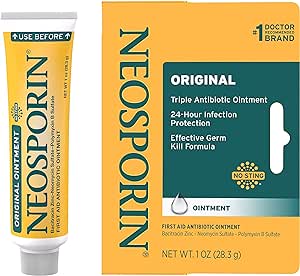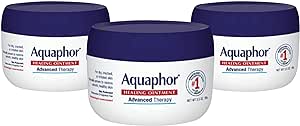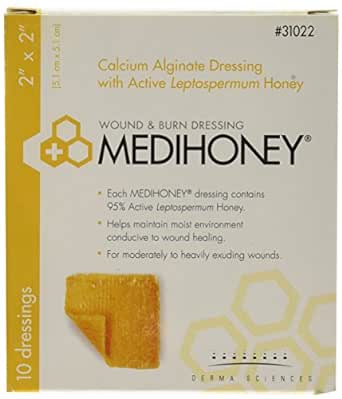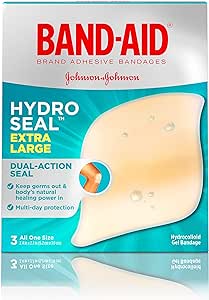When it comes to treating cuts, selecting the right skin repair product is crucial for quick and effective healing. In this comprehensive review, we’ve rounded up the 7 best skin repair solutions, ensuring you make an informed choice for your skin care needs.
Tips for Choosing Skin Repair Solutions for Cuts
Selecting the right skin repair product for cuts is essential for quick and effective healing. Here are some tips to help you make the best choice for your needs:
1. Understand the Severity of the Cut
- Minor Cuts: For small, superficial cuts, over-the-counter antibiotic ointments and healing creams are usually sufficient.
- Deep Cuts: Seek medical attention for deep cuts. Over-the-counter products are not suitable for deep lacerations.
2. Check for Antibiotic Ingredients
- Products containing antibiotics like Neosporin can prevent infection in minor cuts and scrapes. However, if you’re allergic to certain antibiotics, opt for a product without them.
3. Consider Your Skin Type
- Sensitive Skin: Choose hypoallergenic and fragrance-free products.
- Dry Skin: Look for ointments that provide extra hydration.
4. Look for Healing Enhancers
- Ingredients like aloe vera, vitamin E, and honey can enhance healing and soothe the skin.
5. Choose the Right Formulation
- Ointments: Thicker and better for dry skin as they lock in moisture.
- Creams: Lighter and may be preferred if you don’t like the greasy feel of ointments.
6. Pain Relief Component
- Some products contain mild analgesics to reduce pain. This can be helpful if the cut is particularly painful.
7. Allergic Reactions
- Be aware of any skin allergies you may have. Avoid products with ingredients that have previously caused reactions.
8. Consult Healthcare Professionals
- When in doubt, especially with deeper or infected cuts, consult a healthcare professional for advice.
9. Read Reviews and Recommendations
- Look for products with positive reviews and recommendations, especially from healthcare sites or professionals.
10. Budget-Friendly Options
- More expensive doesn’t always mean better. Many affordable products are effective for skin repair.
7 Best Skin Repair for Cuts
1. Neosporin Original Antibiotic Ointment

Key Features:
- Triple antibiotic formula
- Prevents infection
- Minimizes scars
Neosporin is a household name for a reason. Its triple antibiotic formula not only accelerates healing but also helps prevent infection, making it ideal for minor cuts. Regular application can also reduce the appearance of scars.
2. Aquaphor Healing Ointment

Key Features:
- Multipurpose ointment
- Creates a protective barrier
- Suitable for sensitive skin
Aquaphor is a versatile choice, perfect for those with sensitive skin. It creates a protective barrier, which allows oxygen flow and promotes healing. Its gentle formula is also effective in treating dry, cracked skin in addition to cuts.
3. Polysporin First Aid Antibiotic Ointment

Key Features:
- Double antibiotic formula
- Reduces risk of infection
- Suitable for all ages
Polysporin is similar to Neosporin but has a double antibiotic formula. It’s a great alternative for those allergic to Neosporin’s ingredients. Suitable for all ages, it reduces the risk of infection and is gentle on the skin.
4. CeraVe Healing Ointment

Key Features:
- Contains ceramides
- Non-greasy formula
- Hydrates and restores skin
CeraVe Healing Ointment, with its unique blend of ceramides, is perfect for restoring the skin’s natural barrier. Its non-greasy formula ensures comfort while effectively hydrating and healing the cut area.
5. Bacitracin Zinc Ointment

Key Features:
- Single antibiotic ointment
- Prevents bacterial infections
- Ideal for minor cuts
Bacitracin Zinc is a straightforward, single antibiotic ointment effective in preventing bacterial infections in minor cuts. Its simplicity is its strength, making it a go-to for quick, uncomplicated healing.
6. Medihoney Gel

Key Features:
- Contains medical-grade honey
- Natural healing properties
- Effective for deeper cuts
Medihoney Gel is unique, utilizing medical-grade honey. Its natural healing properties are particularly effective for deeper cuts, promoting a faster healing process and reducing the risk of infection.
7. Band-Aid Brand Hydro Seal Adhesive Bandages

Key Features:
- Hydrocolloid gel bandages
- Promotes optimal healing
- Waterproof
Band-Aid Hydro Seal bandages are not your typical bandages. They contain a hydrocolloid gel that creates the perfect environment for healing. Plus, they’re waterproof, allowing you to continue with daily activities without worry.
| Product | Antibiotic | Specialty | Best For |
|---|---|---|---|
| Neosporin | Triple | Prevents scars | Minor cuts |
| Aquaphor | None | Sensitive skin | Sensitive skin, dryness |
| Polysporin | Double | Reduces infection risk | All ages |
| CeraVe | None | Hydrates & restores | Dry, cracked skin |
| Bacitracin Zinc | Single | Prevents bacterial infections | Minor cuts |
| Medihoney Gel | None | Natural healing | Deeper cuts |
| Band-Aid Hydro Seal | None | Hydrocolloid technology | Active lifestyle |
Important Note:
“Always consult with a healthcare professional if the cut is deep, doesn’t stop bleeding, or shows signs of infection like redness, swelling, or warmth.”
Conclusion
Selecting the right skin repair solution for cuts is essential for effective healing and preventing infection. From antibiotic ointments like Neosporin and Bacitracin Zinc to natural alternatives like Medihoney Gel, there’s a product for every need. Remember to consider the depth and severity of the cut and your skin type when making your choice. With these 7 options, you’re equipped to handle minor injuries with confidence and care.
Frequently Asked Questions About Skin Repair for Cuts
When it comes to skin repair for cuts, there are numerous questions that often come to mind. Below, you’ll find answers to some of the most frequently asked questions, providing you with valuable insights into effective skin care and healing.
1. What is the Best Skin Repair Product for a Cut?
- The best product can vary depending on the severity of the cut and your skin type. Antibiotic ointments like Neosporin are commonly recommended for minor cuts to prevent infection and promote healing.
2. Can I Use Regular Moisturizer to Heal a Cut?
- While regular moisturizers can keep the skin hydrated, they do not have the antiseptic and healing properties found in products specifically formulated for cut healing.
3. How Often Should I Apply a Skin Repair Product to a Cut?
- Generally, you should apply a skin repair product 1-3 times daily, or as directed by the product instructions or a healthcare professional.
4. Are Natural Remedies Effective for Skin Repair?
- Some natural remedies like aloe vera and honey have healing properties. However, they may not be as effective in preventing infections as medicated options.
5. Should I Cover a Cut After Applying Skin Repair Cream?
- It’s often recommended to cover a cut with a sterile bandage after applying a skin repair product to protect it from bacteria and dirt.
6. Can I Use Skin Repair Products on Children?
- Many skin repair products are safe for children, but it’s important to read the label and, if in doubt, consult a pediatrician.
7. How Can I Tell if a Cut is Infected?
- Signs of infection include redness, swelling, increased pain, warmth around the cut, or pus. If you suspect an infection, seek medical attention.
8. Do Skin Repair Products Help with Scarring?
- Some skin repair products contain ingredients that can reduce scarring. Look for products with vitamin E or silicone, which are known to help minimize scar appearance.
9. Is it Safe to Use Expired Skin Repair Products?
- Using expired products is not recommended as they may be less effective and could lead to skin irritation or infection.
10. What Precautions Should I Take When Using Skin Repair Products?
- Always clean the cut thoroughly before application and use the product as directed. If you experience any adverse reactions, discontinue use and consult a healthcare professional.